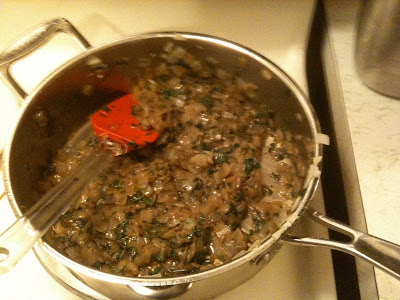Alright, so I'm six posts behind on this thing, so these posts will be short while I catch up. This is partially because I have too short of an attention span to write too much and partially because these breads were much more involved, so I didn't have a chance to take many pictures with which to fill these posts out.
This sourdough was quite a labor of love. I began by making my own sourdough starter. The first try never took off, as the wild yeast apparently wasn't appreciating the lovely home I was providing for it. The second try worked, however, and a week or so later, I had a barm ready to scoop up and start my first sourdough. I started out with some barm, flour and just enough water to for it to form up into a ball, then let it ferment for a while until it doubled in size. I then let it relax in the fridge overnight.
The next day, I took the starter out of the fridge and cut it into smaller pieces. I happen to believe they looked like pizza rolls. I added these starter pieces to some flour and salt with enough water to make a nice smooth dough, then did the whole kneading and fermenting thing.
At this point, I split the dough into two pieces and made boules, the word snobby people people use for the round dome of bread ("balls"). These rose again, and I used the same baking technique as I did for the ciabatta. It wasn't quite so scary this time, as I knew I wouldn't immediately destroy the bread if I did something wrong.
So they were a little lumpy and not exactly round, but not bad for a first time effort! The bottoms are another story altogether, as it was very apparent how I tried to pull the dough around to make the balls, but I suppose that's something I'll learn with practice.
The bread itself was excellent. It had a great tang to it, so I know my wild yeast friends were doing their job. I really don't have any distinct memories of eating sourdough bread before, so I don't have anything to compare it to. The original startup for this bread was quite an investment, but I now have barm that I have been using for various recipes for two weeks now, and I'm glad I have it at my disposal, as I can make something relatively impressive like this with very little effort on my part.
Sourdough? Check.
Next up? Rye.


















